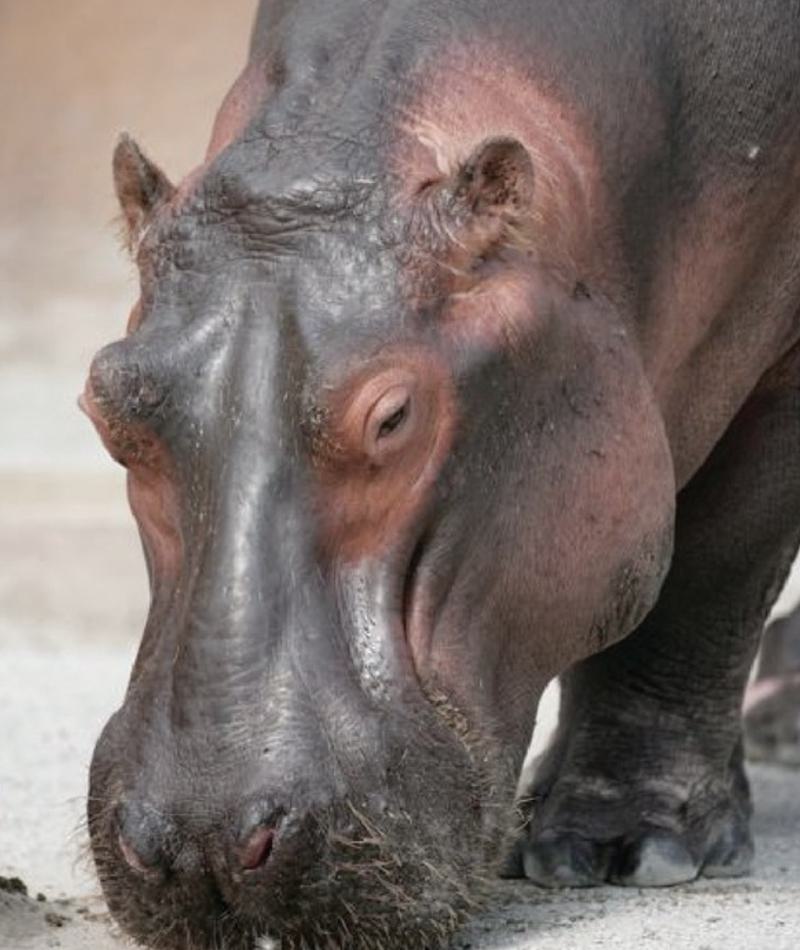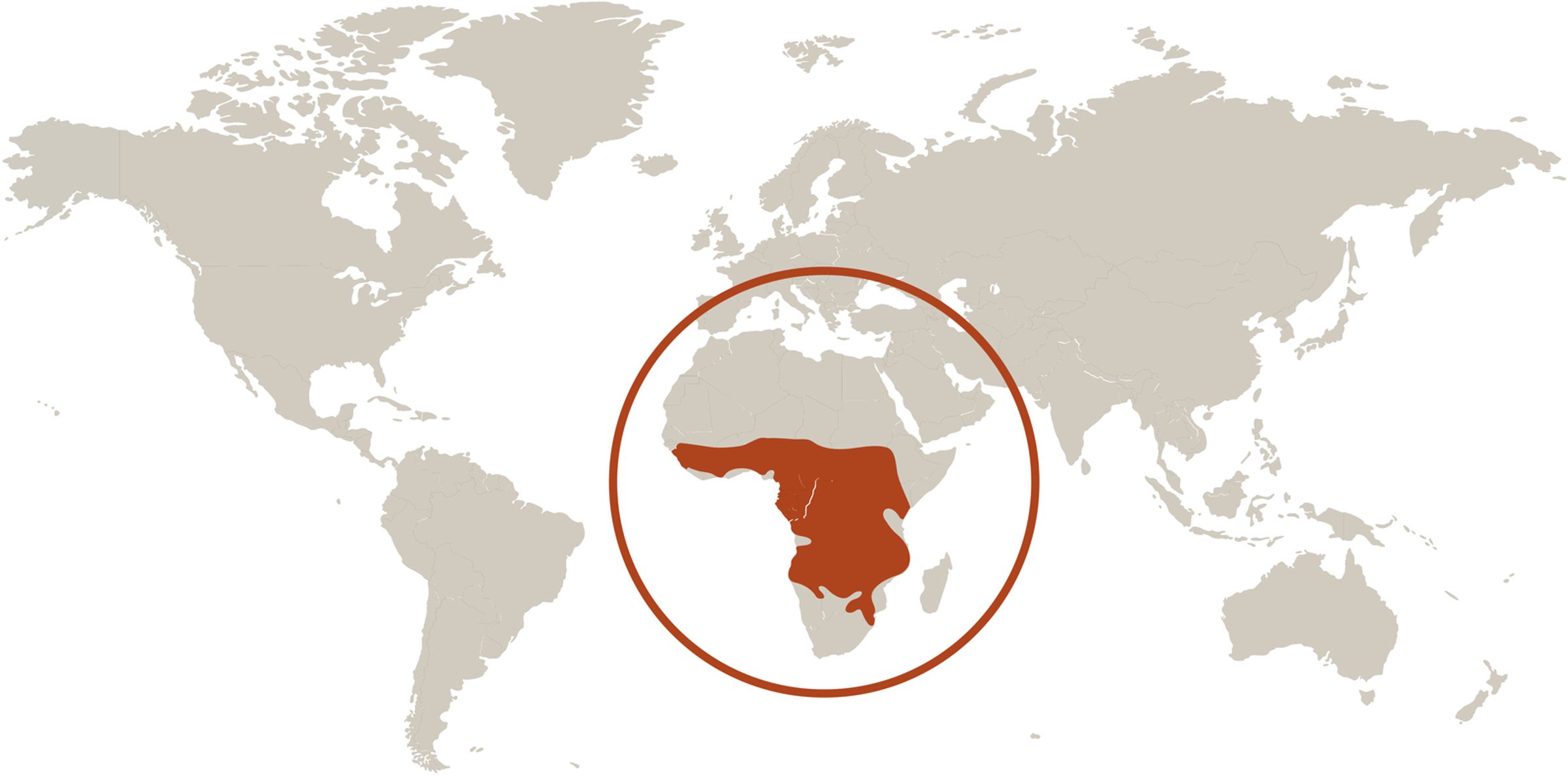
Hippopotamus
Hippopotamus amphibius
Did you know?
- Hippopotamuses are part of the Hippopotamidae family.
- The name “hippopotamus” comes from a Greek word meaning “water horse” or “river horse.”
- The live near and in rivers and lakes in Sub-Sahara Africa.
- Hippos do not sweat but secrete a thick substance from their pores called “blood sweat.”
- After a pregnancy of about eight months, a female hippo will have one baby.
Water Adaptations
Hippos spend most of their lives in the water, and their body is well-suited to an aquatic lifestyle. Their eyes and ears sit on top of their head so they can be aware of their surroundings while in the water. Their nostrils close when they submerge, easily keeping water out. Their blubber makes them fairly buoyant, and they are able to hold their breath for five minutes. Additionally, their skin oozes a pink "slime" that protects them from sunburn, both in and out of the water. However, with all of these adaptations comes a catch – hippos cannot swim. Instead, they spend their time buoyantly bouncing off of submerged surfaces, like rocks and lake bottoms.
A Keystone Species
Hippos have profound effects on their ecosystems. As they walk from the water to their grazing grounds, hippos create well-worn paths, which neighboring animals can use. When hippos "mow" grass, they create hippo lawns and other animals, like gazelles, benefit from the new green shoots that grow there. Additionally, when hippos return to the river, they help the fish who swim there. They defecate in water, and their tail acts like a "manure spreader," shooting dung everywhere. Small fish, snails, and other little critters gobble up the nutrient-rich dung.
Threat Level
- Unknown
- Common
- Near Threatened
- Threatened
- Endangered
- Critically Endangered
- Extinct in the Wild
Vulnerable
The Hippopotamus faces a high risk of extinction in the wild.
Range
Sub-Saharan Africa
Habitat
Rivers and lakes with surrounding grasslands

We care about hippopotamus
Hippos suffer from habitat loss, hunting, and the ivory trade. Since 1995, the international trade in hippos and hippo products has been severely restricted. Still, poaching remains a serious problem. There is a need for long-term protection of national parks and other hippo habitats if these animals are to survive.
The Saint Louis Zoo participates in the Species Survival Plan for the river hippopotamus. This is a cooperative breeding program, with a number of zoos working together to ensure the survival of the species. We also support three hippos at the Zoo.
Learn more about how we are helping wildlife around the world.
Find this animal in River's Edge

SAINT LOUIS ZOO ZONE
River's Edge
Take a journey along a mythical waterway through four continents to discover how wildlife, plants and people interact. River's Edge is the Saint Louis Zoo's first immersion exhibit—a lushly planted naturalistic environment showcasing multiple species from around the world.

